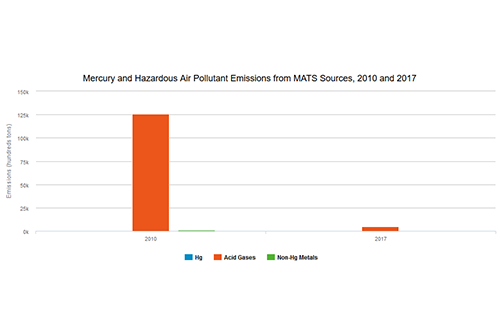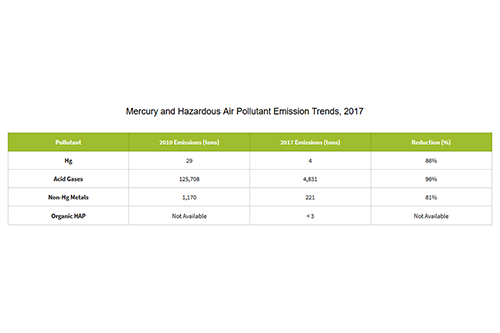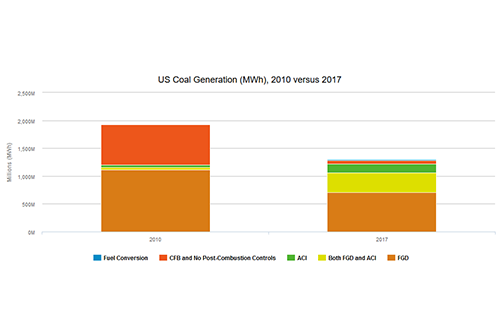Progress Report
Emission Reductions
The Acid Rain Program (ARP) and Cross-State Air Pollution Rule (CSAPR) programs significantly reduced sulfur dioxide (SO₂), annual nitrogen oxides (NOₓ), and ozone season NOₓ emissions from power plants. Most of the emission reductions since 2005 occurred in response to the Clean Air Interstate Rule (CAIR), which was replaced by CSAPR in 2015. The Mercury and Air Toxics Standards (MATS) set limits on the emissions of hazardous air pollutants from coal- and oil-fired electric utility steam generating units (EGUs) and have been one of the reasons for reductions in those emissions since 2010. This section covers changes in emissions at units affected by CSAPR, ARP, and MATS between 2017 and previous years.
Sulfur Dioxide (SO₂) Figures
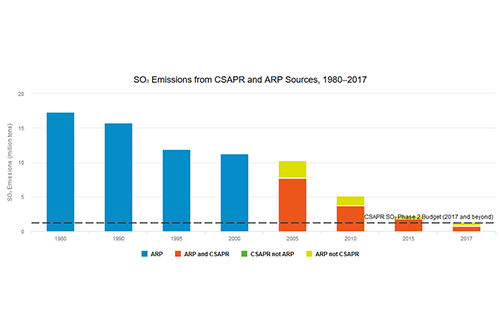
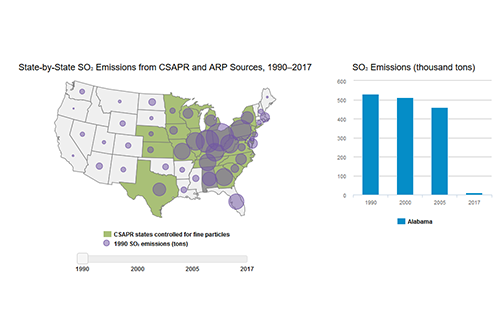
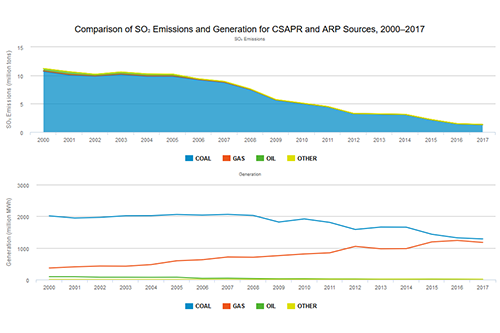
Annual Nitrogen Oxides Figures
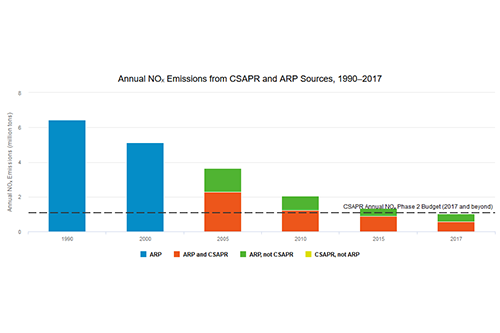
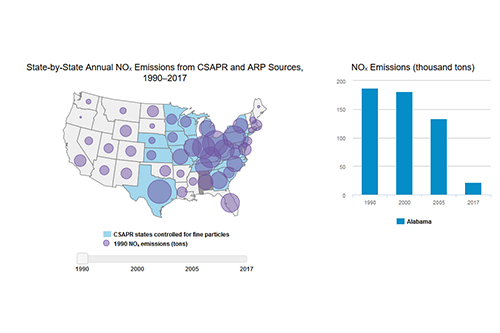
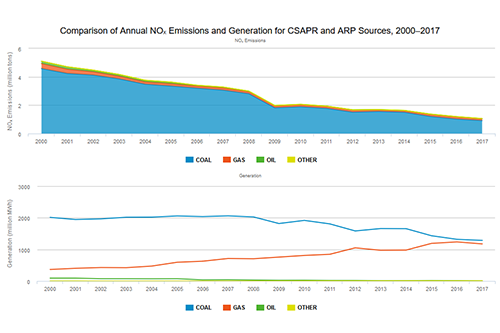
Ozone Season Nitrogen Oxides Figures
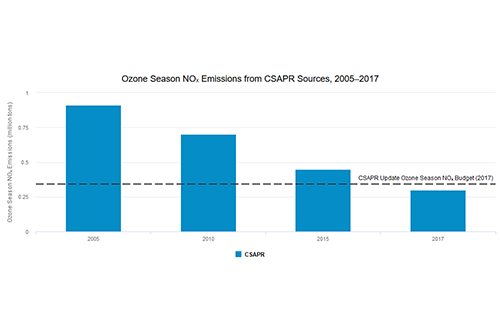
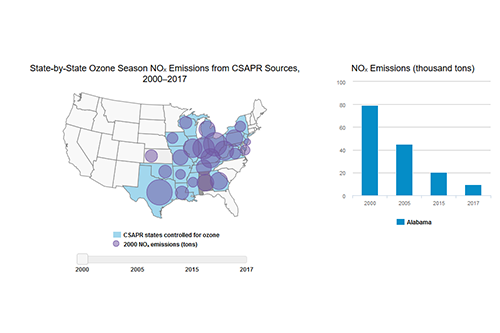
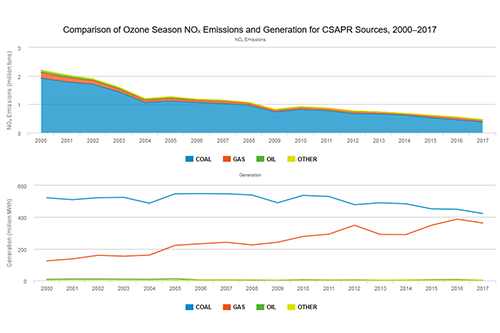
Mercury and Air Toxics Figures
